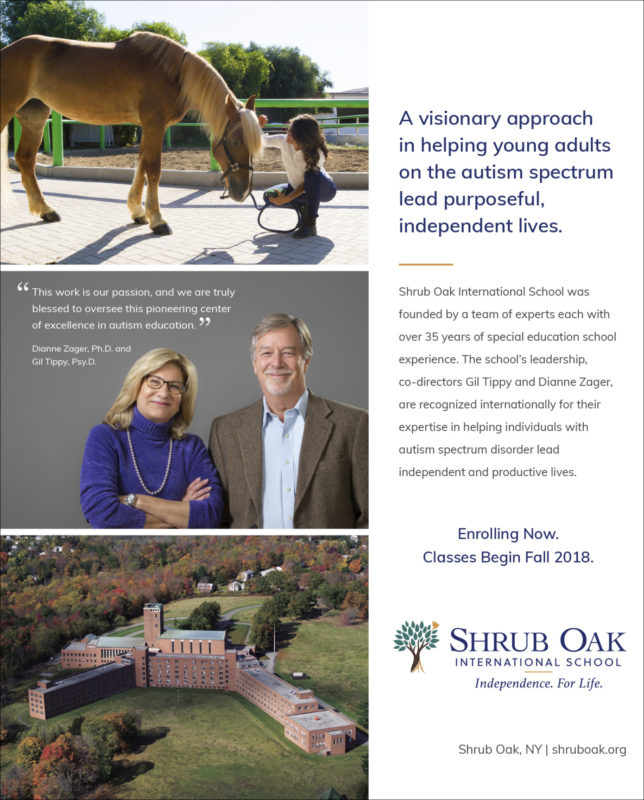Educating adolescents with autism spectrum disorder require specialized programming that takes into account their complex learning characteristics. While certain practices have been shown to be effective in educating students on the spectrum; historically, the field has been vulnerable to claims of practices that have not been supported. To prevent adoption of ineffective and perhaps even harmful intervention, it is necessary to examine the evidence base prior to implementing particular approaches. In this paper, we discuss three intervention models, each of which has established a strong evidence base in improving student outcomes, with regard to their utility in transition planning.

Tracey Frank, MS

Dianne Zager, PhD
The three recommended models – the Ziggurat Intervention Model (Aspy & Grossman, 2007); SCERTS Model (Prizant, Wetherby, Rubin, Rydell, & Laurent, 2003); and the Self-Determined Career Development Model (SDCDM) (Wehmeyer, 2010) – are designed specifically to guide people who are educating with adolescents with autism and related developmental disabilities. The Ziggurat Model organizes and builds upon students’ characteristics, strengths, interests, and sensory needs. The SCERTS model considers student development through a transactional perspective, focusing on social communication, emotional regulation, and family dynamics. The SDCDM addresses self-determination competence and career development for secondary and postsecondary students. By combining aspects of these three over-arching models, a comprehensive understanding of the student may be obtained. From such understanding, appropriate educating strategies can be selected and integrated to meet the evolving needs of adolescents with autism.
Without understanding student needs and applying this knowledge to the selection and implementation of intervention strategies, discussing what to teach is just rhetoric. A comprehensive program that incorporates the student’s (a) skill and knowledge levels in academics, communication, behavior, and social interaction; (b) strengths and interests; and (c) sensory issues can be built through collective orchestration of the SCERTS and Ziggurat models. A rich picture of the student’s learning needs emerges when the Underlying Characteristics Checklist and the Individual Strengths Inventory are linked to the Ziggurat Model (see Smith Myles, Smith, Aspy, Grossman, & Henry, 2012). Further, when employed in conjunction with the Self-Determined Career Development Model, these person-centered frameworks enable strategic planning to meet targeted community living employment goals. In the following section, we provide a brief overview of each model with discussion of benefits derived by combining components from each. For additional information about the models discussed, readers are directed to the references at the conclusion of this article.
The Ziggurat Model
The Ziggurat Model was designed to guide parents, teachers and clinicians in program development, particularly in identifying key areas of critical intervention (Smith Myles et. al., 2012). The name ziggurat is derived from an ancient Mesopotamian architectural invention. Similar to Egyptian pyramids, the ancient ziggurat had four sides and rose up to reach the gods. Ziggurats were different than pyramids, however, as the exterior walls were tiered. The five tiered levels in The Ziggurat Model intervention from the foundation up include: (1) sensory differences and biological needs; (2) reinforcement; (3) structure; (4) visual/tactile supports; and (5) tasks, demands and skills to teach. The first four steps assist educators in understanding the student, thus facilitating identification of goals that are well-suited to student needs. Components of the process include the Ziggurat Worksheet (Aspy & Grossman, 2007) and the Comprehensive Autism Planning System (CAPS) (Henry & Smith Myles, 2007).
The SCERTS Model
Looking at intervention planning through a somewhat different lens, the SCERTS intervention model (Prizant, Wetherby, Rubin, & Laurent, 2003) also develops an in-depth profile for each student, while placing increased emphasis on family support. This model focuses on social communication, emotional regulation, and transactional support (Wetherby & Prizant, 2005). Both the SCERTS and Ziggurat models address core challenges of individuals with autism and are built upon solid foundations of empirical data. They each highlight critical areas for learning and development, essential to successful transition intervention.
The Self-Determined Career Development Model (SDCDM)
While the SCERTS and Ziggurat models provide a substantial amount of important information for program development, a pitfall of these programs is that they do not directly guide and monitor self-determination development. Building self-determination competency is central to educating adolescents and young adults with autism. Too often this critical aspect of secondary education is overlooked. Skills that comprise self-determination include: choice making, decision making, problem solving, goal setting, risk taking with safety, self-regulation, self-instruction, locus of control, perceptions of self-efficacy, self-advocacy, self-awareness, and self-knowledge (Bremer, Kachal, & Schoeller, 2003; Deci & Ryan, 2000). Research has shown that individuals who are more self-determined are more likely to achieve positive adult outcomes than peers who are not self-determined (Palmer & Wehmeyer, 2003).
The Self-Determined Career Development Model (SDCDM) enhances learning through questions that help steer future planning, and is positively correlated with improved adult outcomes and employment success. The SDCDM is designed to guide the transition to employment process and to monitor progress toward goals, so that the action plan or goal may be revised when necessary. Phases of SCDCM emphasize self-advocacy and decision-making and include (a) goal setting, (b) constructing learning plans, and (c) adjusting behaviors.
Summary
In summary, when planning an individualized transition program and selecting intervention strategies it is necessary to consider the student’s needs, interests, and strengths. A thorough understanding of the learner’s profile is necessary, especially with regard to underlying characteristics associated with autism. Based on accurate comprehensive information, realistic goals and objectives can be identified. Ziggurat intervention, SCERTS and SDCDM are complementary evidence-based tools to help guide educators in the critical and essential transition process.
Dianne Zager, PhD, is Co-Director & Dean of Education, and Tracey Frank, MS, is Director of Education at Shrub Oak International School. For more information, please visit www.shruboak.org.
References
Aspy, R., & Grossman, B.G. (2007). The Ziggurat Model: A framework for designing comprehensive intervention for individuals with high-functioning autism and Asperger syndrome. Shawnee Mission, KS: Autism Asperger.
Bremer, C.D., Kachal, M., & Schoeller, K. (2003). Self-determination: Supporting successful transition. Retrieved November 15, 2005, from www.ncset.org/publications/viewdesc.asp?id=962.
Deci, E.L., & Ryan, R.M. (2000). The what and why of goal pursuits: Human need and the self-determination of behavior. Psychological Inquiry, 11, 227-268.
Henry, S., & Smith Myles, B. (2007). The comprehensive autism planning system for individuals with Asperger syndrome, autism, and related disabilities: Integrating best practices throughout the student’s day. Shawnee Mission, KS. Autism Asperger.
Palmer, S.B. & Wehmeyer, M.L. (2003). Promoting self-determination in early elementary school: Teaching self-regulated problem-solving and goal-setting skills. Remedial and Special Education, 24(2), 115-126.
Prizant, B., Wetherby, A., Rubin, E., Rydell, P., & Laurent, A. (2003). The SCERTS Model: A family-centered, transactional approach to enhancing communication and socioemotional abilities of young children with ASD. Baltimore: Paul H. Brookes.
Smith Myles, B., Smith, S.M., Aspy, R., Grossman, B.G., Henry, S. (2012). Evidence-based practices: The Ziggurat Model and a comprehensive autism planning system. In D. Zager, M.L. Wehmeyer, R.L. Simpson (eds.) Educating students with autism spectrum disorders: Research-based principles and practices. (pp. 126-148). New York: Routledge/Taylor & Francis.
Wehmeyer M.L. (2010). Self Determination. In: J.H. Stone & M Blouin, (Eds.). International Encyclopedia of Rehabilitation. Retrieved Februrary 11, 2014 from: http://cirrie.buffalo.edu/encyclopedia/en/article/34/.
Wehmeyer, M. L., & Schwartz, M. (1997). Self-determination and positive adult outcomes. Exceptional Children, 66, 245-255.
Wetherby, A.M., & Prizant, B.M. (2005). Enhancing language and communication development in autism spectrum disorders: Assessment and intervention guidelines. In D. Zager (ed.) Autism spectrum disorders: Identification, education, and treatment (3rd ed.). (pp. 327-365). Mahwah, NJ: Lawrence Erlbaum Associates.





